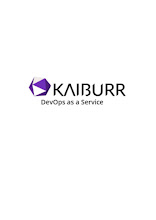Security threats are constantly evolving, making it critical for organizations to adopt proactive strategies to protect their digital assets. Continuous security ensures that businesses stay ahead of threats, safeguarding sensitive data, applications, and networks. This approach not only strengthens cybersecurity posture but also enhances compliance and business resilience.
.jpg) |
| continuous-security-compliance |
What is Continuous Security?
Continuous security is an ongoing process of monitoring, detecting, and mitigating security risks in real time.
Unlike traditional security models, this approach ensures that security measures are integrated into every stage of the software development lifecycle (SDLC).
It helps organizations address vulnerabilities instantly rather than waiting for periodic audits or scheduled security checks.
Benefits of Continuous Security
Real-time threat detection: Identifies security risks before they can cause significant damage.
Enhanced compliance: Ensures adherence to industry standards and regulatory requirements.
Improved DevSecOps integration: Enables security to be an integral part of the development process.
Reduced security costs: Detecting vulnerabilities early prevents costly security breaches.
Better user experience: Maintains system uptime and availability, ensuring seamless operations.
How Continuous Security Works
Automated security scans are conducted at every stage of development and deployment.
AI and machine learning help detect abnormal patterns and potential threats.
Security policies and access controls are enforced to prevent unauthorized access.
Continuous monitoring tools provide real-time alerts and threat intelligence.
Regular updates and patches ensure that vulnerabilities are addressed promptly.
Why Enterprises Should Implement Continuous Security
Protection against evolving cyber threats: As hackers adopt sophisticated attack methods, businesses need a dynamic security approach.
Seamless cloud security: With the increasing adoption of cloud technologies, continuous security helps mitigate cloud-based risks.
Data protection and privacy: Safeguarding sensitive customer and business data is crucial in today’s digital landscape.
Regulatory compliance: Organizations in industries like finance and healthcare must adhere to strict security regulations.
How Kaiburr Supports Continuous Security
End-to-end security integration: Kaiburr ensures security is embedded in every stage of software development and deployment.
Automated vulnerability assessments: Identifies security weaknesses before they become threats.
Real-time security insights: Offers continuous monitoring and reporting for enhanced security visibility.
Seamless DevSecOps implementation: Enhances collaboration between development, security, and operations teams.
Customized security solutions: Tailored security measures based on business needs and industry compliance requirements.
Best Practices for Implementing Continuous Security
Adopt a proactive security mindset: Treat security as a continuous process, not a one-time task.
Leverage automation: Use automated tools to monitor, detect, and respond to security threats.
Ensure DevSecOps collaboration: Encourage collaboration between development, security, and operations teams.
Train employees regularly: Educate teams about security best practices to minimize human errors.
Monitor and analyze security metrics: Use data-driven insights to strengthen security strategies.
Final Thoughts
Continuous security is a necessity in today’s digital world, ensuring that businesses remain resilient against evolving cyber threats. By integrating security into every stage of the development and deployment process, organizations can protect their assets, maintain compliance, and build trust with customers. Solutions like those offered by Kaiburr make it easier for enterprises to implement and maintain robust security measures seamlessly.



.jpg)


0 Comments